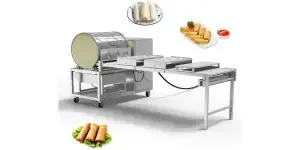Gone are the days of laboriously hand-rolling each samosa, because it’s time to embrace the wonders of modern technology with samosa rolling machines!
These remarkable devices are designed to streamline samosa production, enabling the effortless creation of a multitude of these delectable triangular treats. However, with a wide range of samosa rolling machines available from different manufacturers, it can be hard to know how to source the ideal one.
This article will explain in detail what samosa rolling machines are, as well as highlighting their various types. It will also offer the key factors to consider to ensure you buy suitable samosa rolling machines that meet your needs.
Table of Contents
What are samosa rolling machines?
Types of samosa rolling machines
How to buy suitable samosa rolling machines
Conclusion
What are samosa rolling machines?
Samosa rolling machines are automated kitchen appliances that simplify the process of making samosas. They flatten the dough, dispense the filling, and neatly fold the samosas into the desired shape. Samosa rolling machines help to streamline production, increase efficiency, and make it easy to enjoy perfectly shaped samosas.
Types of samosa rolling machines
1. Manual samosa rolling machines
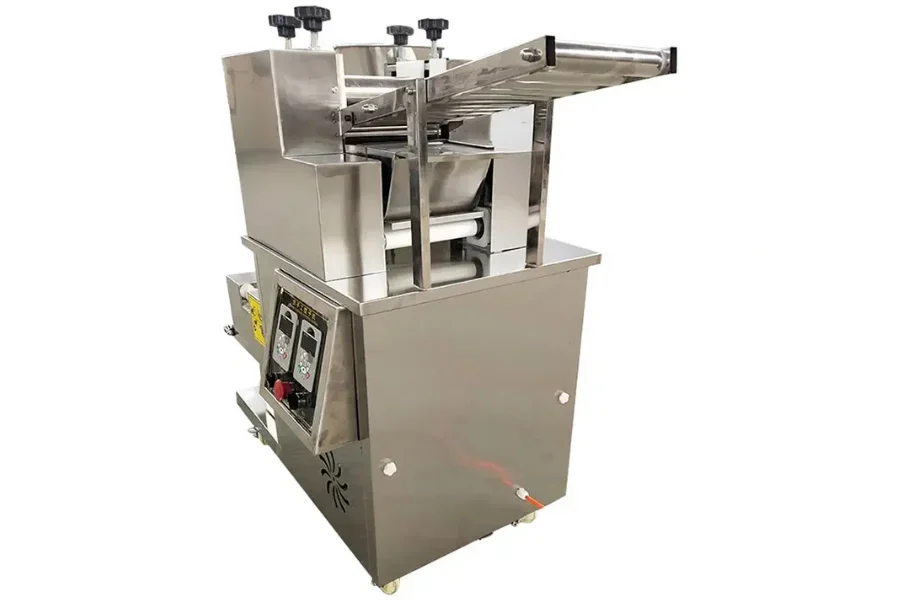
Manual samosa rolling machines involve hands-on operation for every stage of the process. They typically include a rolling mechanism to flatten the dough, and the user manually adds the filling and folds the samosas. These machines are well-suited for individuals who prefer a more hands-on approach or for small-scale production needs.
With their simplicity and hands-on nature, these machines are ideal for homemade samosa enthusiasts or small-scale operations seeking a more traditional approach to samosa-making.
2. Semi-automatic samosa rolling machines
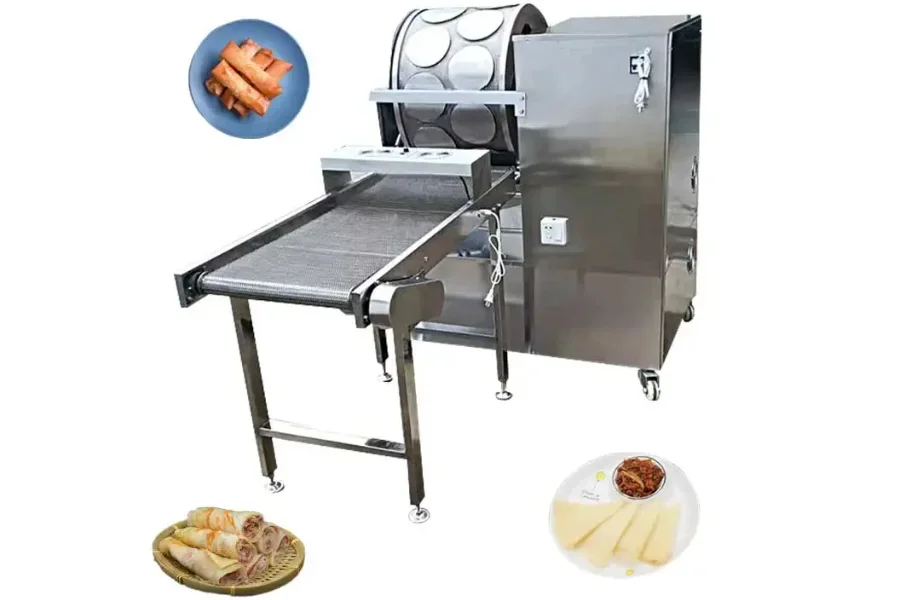
Semi-automatic samosa rolling machines combine manual and automated functions, featuring a rolling mechanism to flatten the dough, an automated filling dispenser, and a manual folding station. They offer increased efficiency compared to manual machines and are suitable for moderate production volumes, balancing manual control and time-saving automation.
With these machines, the filling process is automated, while users manually fold the samosas, allowing for customization and precision. They are a practical choice for individuals or businesses looking to enhance samosa production efficiency without fully transitioning to fully automatic systems.
3. Fully automatic samosa rolling machines
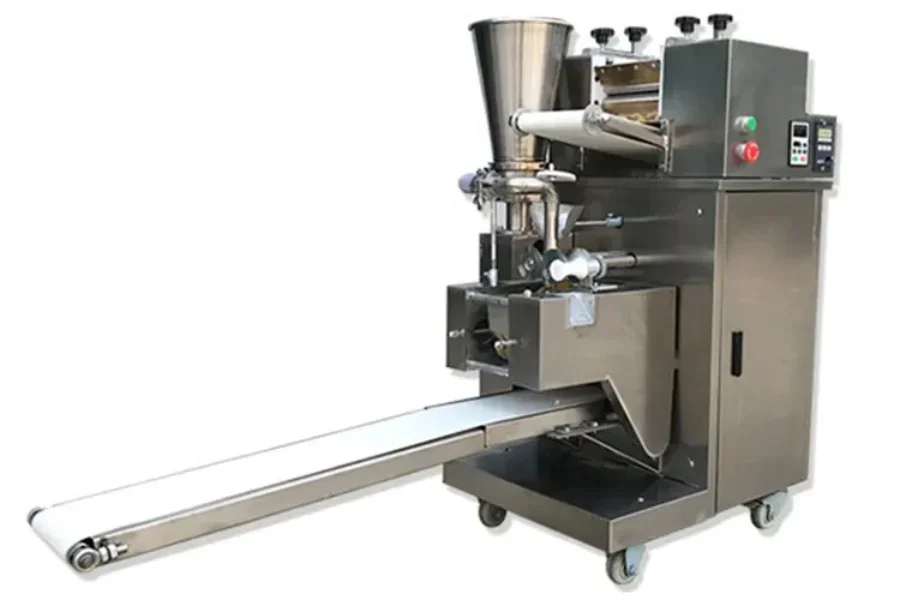
Fully automatic samosa rolling machines are highly advanced appliances that automatically take care of the entire samosa-making process. They have a conveyor belt or rolling mechanism to flatten the dough, an automated filling dispenser that accurately dispenses the desired quantity and an integrated folding system that neatly shapes the samosas.
These machines are perfect for high-volume production, as they can efficiently produce many samosas with minimal human intervention. By eliminating the need for manual labor in various stages of samosa-making, fully automatic machines offer convenience, speed, and consistency, making them a top choice for commercial operations.
4. Industrial samosa rolling machines
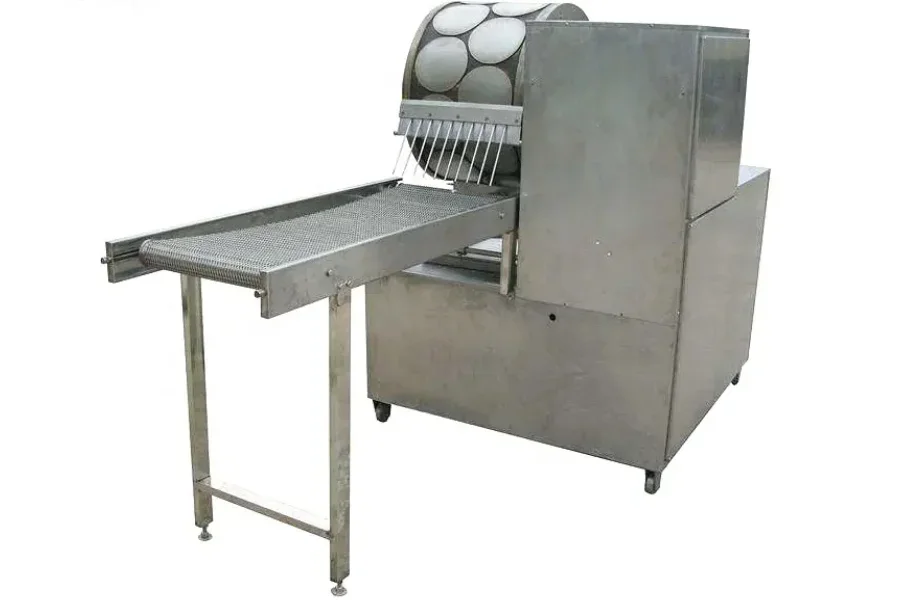
Industrial samosa rolling machines are designed for commercial-scale production, offering robust performance and durability to handle continuous and intensive use. These heavy-duty machines are built to withstand the rigorous demands of high-volume production environments.
In addition to their sturdy construction, industrial machines often come equipped with advanced dough handling systems, ensuring consistent and efficient dough processing. They also feature precision filling dispensers, allowing precise and controlled filling quantities.
How to buy suitable samosa rolling machines
1. Price
Higher-priced machines often come with advanced features and enhanced durability. However, it’s crucial to strike a balance between cost and functionality. Carefully evaluate the essential features and find a machine that balances quality, performance, and affordability. On average, the price range of samosa rolling machines can vary significantly, from around US$ 500 for smaller, manual or semi-automatic models to US$ 10000 for larger, fully automatic or industrial-grade machines.
2. Capacity
Buyers should choose a machine whose capacity aligns with production goals to prevent any bottlenecks or underutilization. Opting for a machine with a too-low capacity may hinder production efficiency while choosing one with excessive capacity can result in unnecessary expenses and waste.
The average capacity range of samosa rolling machines varies depending on the model and purpose, starting from around 200 to 300 samosas per hour for smaller machines and going up to 5000 to 10000 samosas per hour for larger, industrial-grade machines.
3. Speed
While machines with higher speeds can boost output, it’s essential to ensure that the machine maintains the desired quality and precision even at these higher speeds. The average speed range of samosa rolling machines varies depending on the model and specifications. It can range from around 200 to 500 samosas per hour for manual or semi-automatic machines. Fully automatic or industrial-grade machines can achieve speeds of up to 10000 samosas per hour.
4. Durability
Samosa rolling machines constructed with industrial-grade materials such as stainless steel or heavy-duty plastic are generally more durable and capable of withstanding the demands of continuous use. Look for machines that feature solid construction and reliable components, as these factors contribute to longevity and reduce the need for frequent repairs or replacements.
On average, a well-maintained and properly operated samosa rolling machine can have a lifespan ranging from 5 to 15 years, depending on the model, usage, and maintenance practices.
5. Automation level
Manual machines require more manual involvement in each step, while semi-automatic and fully automatic machines offer different levels of automation. It’s essential to consider the efficiency and consistency of automation and the level of control and customization desired in shaping and filling the samosas. Finding the right balance between automation and manual control will ensure that the machine meets your needs.
6. Components
When purchasing samosa rolling machines, evaluating key components such as the stainless material, control unit, and conveyor is essential. The choice of stainless material is crucial for maintaining hygiene, durability, and easy cleaning, with stainless steel being preferred due to its corrosion resistance and smooth surface.
A control unit, consisting of electronic components and controls, allows you to adjust parameters like rolling speed and dough thickness, contributing to efficient samosa production. Conveyor systems aid in the movement of dough and filling, necessitating a design that can handle different consistencies while also being robust and easy to clean.
Conclusion
Purchasing a suitable samosa rolling machine requires careful consideration of various factors such as price, capacity, speed, durability, automation level, and size. To explore a wide range of samosa rolling machines and compare options from different suppliers, visit Alibaba.com.
